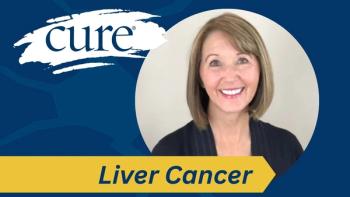
Immunotherapy Adverse Events: Managing Inpatient Toxicity
Transcript: Anna C. Pavlick, DO: When we talk about other adverse events, clearly the dermatologic adverse events are the ones I deal with the most. But then there’s the potential for colitis, pneumonitis, hepatitis and nephritis, picked up when patients come in and have their lab work done. But the endocrinopathies to me are the biggest issue for most patients because they have a tendency to be lifelong. I tell patients, “If they happen, you’re going to have to deal with them for the rest of your life; however, they do not preclude us from giving you further therapy.” So the upside is you can stay on therapy. The downside is we have to give you a medicine for the rest of your life to replace what we’ve just lost.
Fortunately, those are in the less-than-10% range, so we don’t have to deal with that often. But patients need to be aware with hypothyroidism clearly the most common and, thank goodness, an easy thing to manage. Patients don’t mind that much.
Anthony Rossi, MD, FAAD: Are there any certain populations that you’ve noticed are more predisposed to these endocrinopathies?
Anna C. Pavlick, DO: No. Honestly, it’s when you least expect it. I have now picked up probably five patients with insulin requiring diabetes based on when they came in for their PET [positron emission tomography] scans. I got a call from radiology saying, “I’ve got your patient here, and they’ve been fasting since last night, and I’ve got a blood sugar of 400 mg/dL.”
Anthony Rossi, MD, FAAD: Interesting.
Anna C. Pavlick, DO: It really is fascinating, because patients are not complaining to me that they’re thirsty all the time or all of a sudden they’re urinating or they’re really losing weight. They don’t have the classic DKA [diabetic ketoacidosis] complaints that most type 1 diabetics would have that are not drug induced. I don’t think I’ve even had one patient who has called me and said, “Hey, listen, I’ve got a lot of dry mouth” or “I’m urinating more often than not.” It really has always been found accidentally.
I had another lady who came in. She was sitting in her exam room, and I got a call from the lab as I walked in to tell me that her blood sugar was 675 mg/dL.
Anthony Rossi, MD, FAAD: Wow.
Anna C. Pavlick, DO: I got a urine test from her, and she was dumping ketones, so she wound up being hospitalized for a diabetic ketoacidosis. But fast-forward about four months, to the era of COVID-19 [coronavirus disease 2019]. We have really learned to be very creative and how to manage DKA as an outpatient. I’ve had that happen twice, and patients will look at me and say, “There is no way I’m going to the hospital because I’ll never leave.” Likewise, I don’t want to put them in the hospital. But thanks to telemedicine, I’ve been able to get them an appointment with an endocrinologist as they’re sitting in my office getting their liter of fluid, getting their insulin and sugars down and being taught by the nurses how to give themselves a subcutaneous injection. Then they are followed with a video visit with the endocrinologist every day. We’ve successfully been able to keep the two patients I’ve had with type 1 diabetes as outpatients and very well controlled. We’re learning new ways to manage what used to be an inpatient toxicity.
Anthony Rossi, MD, FAAD: We’re feeling the same way, especially for our dermatologic patients who are having adverse reactions to medication. We’re trying to really be able to triage them better, either via telemedicine or really talking to the patient and getting photos. For us, the immune-related dermatologic reactions are relatively low in these patients who are receiving cemiplimab. How do you feel about how common the other adverse reactions are in comparison with other medications?
Anna C. Pavlick, DO: I don’t have that many. I have by far fewer with cemiplimab in my squamous cell patients compared with my melanoma patients who will get combined immunotherapy, and that’s a whole different discussion. It does make it more tolerable for the older population to get this medicine.
I have treated a 96-year-old who is probably in much better shape than half the U.S. population. He said to me, “Listen, I go to the opera every Thursday. I go out every day of my life. Why would you ever think to not give me something that’s going to help me?” I said, “I have absolutely nothing to argue with you,” and he’s been on cemiplimab now for about six months, having a fantastic response. So I really don’t look at patient’s numerical age as a reason to not treat them with cemiplimab. It really is about whether there are multiple comorbidities and what are the other reasons they might have that I may not want to. If they have CLL [chronic lymphoblastic leukemia], they may not have such a good response because they’ve already got a dampened immune system.
Then there’s all the transplant patients that both of us see, for whom anti-PD-1 therapy is really not a viable option for risk of graft rejection.
Transcript Edited for Clarity




